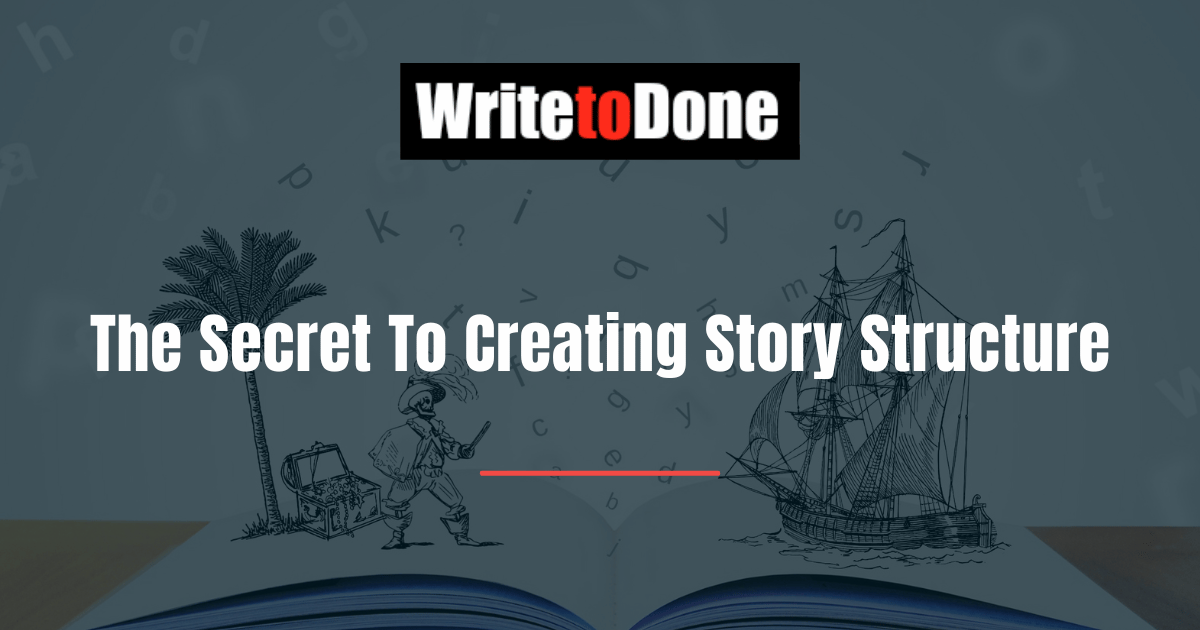Outlines Are The Secret to Story Structure!
Structure is the most important technical aspect of any story.
It brings solidity and focus to a story; yet it is often overlooked and misunderstood.
Novelists sometimes believe structure will sap their stories of originality. But this is about a bajillion miles from the truth.
Structure is nothing more than a roadmap — a time-tested archetype for crafting the rise and fall of action and character evolution within our stories.
Story structure
The classic approach to structure divides story into three acts, which we can further divide into distinct categories:
1. First Act – In which characters, settings and stakes are introduced to the reader. (e.g., in Star Wars: A New Hope, viewers meet the droids, Darth Vader, Princess Leia, Luke, and Obi-Wan, and learn what is at stake for the characters on a personal level and the galaxy as a whole.)
2. First Major Plot Point -In which the First Act ends with a definitive event that forces the character to react. (The murders of Luke’s aunt and uncle make him decide to go with Obi-Wan to Alderaan.)
3. First Half of the Second Act – In which the character reacts to his plight and tries to regain his bearings. (Obi-Wan hires a ship to Alderaan; Luke starts learning about the Force.)
4. Second Major Plot Point or Midpoint – In which another definitive event occurs, this time forcing the character out of his period of reaction and back into action. (The Death Star captures the Millennium Falcon.)
5. Second Half of the Second Act – In which the characters begin to come into their own and take definitive action against the antagonistic force. (Obi-Wan goes off to shut down the tractor beam, while Luke, Han, and Chewie decide to rescue Princess Leia.)
6. Third Major Plot Point – In which the character’s actions seemingly lead him to a place of defeat. (Obi-Wan dies and the Empire places a tracking beacon aboard the escaping Falcon.)
7. Third Act – In which the character must rally for a final assault against the antagonistic force. (Luke and the Rebels use R2-D2’s schematics of the Death Star to plan a last-ditch assault.)
8. Climax – In which the conflict between protagonist and antagonistic force reaches a deciding moment. (Luke blows up the Death Star.)
9. Resolution – In which loose ends are tied up, and the characters react to the events of the climax. (Princess Leia passes out medals.)
How can we make structure as easy as possible?
Structure presents difficulties because it gives us a lot of stuff to remember all at once.
Beyond that, we’re also faced with the question of how in tarnation to structure our stories when we may not yet have any idea what happens in them.
That’s where the secret comes into play: outline.
Structure is applicable no matter your personal writing process. Pantsers (those who prefer to write without much preparation, or by “the seat of their pants”) can use it just as astutely as plotters (those who plot, or plan, their stories before sitting down to write the first draft).
But for those among us who have chosen to implement the powerful tool of outlining, we will already have a leg up on structure.
How does outlining create story structure?
Outlines allow us to brainstorm important moments in our stories and figure out how all the pieces fit together. We save time and stress in the long run, by using outlines to figure out dead ends and speed bumps, so we can avoid them during the time-intensive first draft.
Whether your outlines consist of a mental list of major scenes, or notebooks full of detailed planning, you’ll be sitting down to your first draft with a structure of sorts already in mind. This structure won’t necessarily be story structure as defined above. But you will at least have a shape of the story in your head.
You’ll know its beginning, middle, and end. From there, it’s a natural next step to consciously crafting your outline into properly structured First, Second, and Third Acts, as divided by the Major Plot Points.
Benefits of creating outlines
- You can identify and plan major structural points before writing the first draft.
- You can see your entire story at a glance, helping you identify inconsistencies in plot and character arcs.
- You get the opportunity to count scenes and estimate word counts, so you can time major plot points.
- They act as a checklist of sorts, against which you can double-check the existence (and effectiveness) of overall structural points before diving into the messiness of the first draft.
- You can use your outline as your dry-erase board for explorations of and experiments with ideas, preventing the need to delete hundreds or even thousands of words.
Structure, in turn, will guide you in identifying your major plot points. From there, you can figure out how best to fill in the blanks.
Some authors prefer to use this list of structural events as the outline. You can go ahead and dive into your first draft without knowing anything more about what happens between the pit stops on your roadmap. Or you can use your knowledge of these events to guide you in fleshing out your outline even further.
Proper story structure is never a choice. If we hope to write stories of worth and popularity, we should always seek to begin with structure. After that, we each have to identify and create the processes that will help us maximize both our creativity and productivity. And for most of us, the outline will be our greatest tool in building strong stories with spot-on structure.
Are you a plotter or a pantser, and how does this influence your approach to story structure? Tell us your opinion in the comments!
















